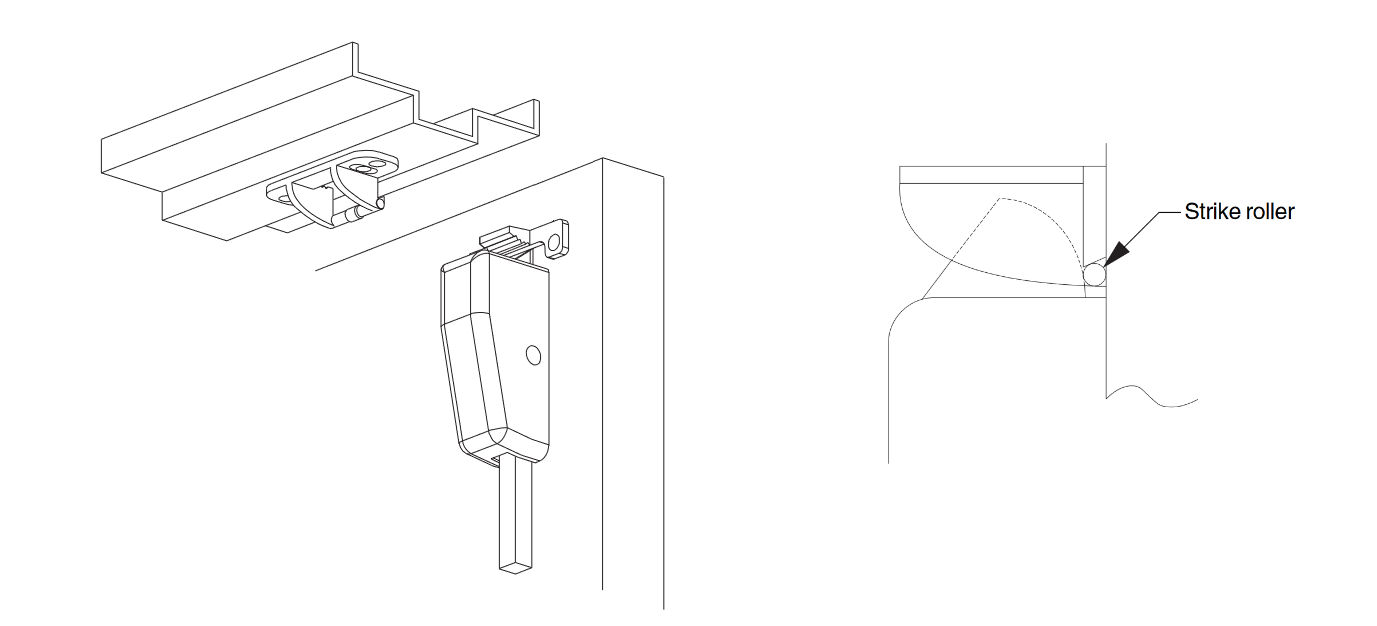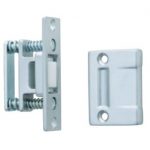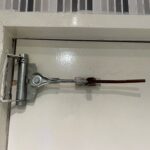
The most common application for a roller latch is on a closet door where positive latching is not required.
I received a Quick Question last week that has come up before:
What is the difference between a roller latch and a roller strike? Are both prohibited on fire door assemblies?
The short answer: Roller latches and roller strikes are not the same type of hardware. While roller latches are prohibited on fire door assemblies, roller strikes are not.
In older health care facilities, it was once common to see roller latches installed on patient room doors.
This is a roller latch. –>
A roller latch uses the friction of a roller to hold the door in the closed position, but it is not considered positive latching hardware, or an active latchbolt as required by NFPA 80 – Standard for Fire Doors and Other Opening Protectives.
Although NFPA 101 – Life Safety Code still allows roller latches to be used on corridor doors in existing health care facilities if certain criteria are met, roller latches are not allowed on corridor doors by the Centers for Medicare and Medicaid Services (CMS). Corridor doors in health care facilities are required to have positive latching hardware, and the CMS directives specifically prohibit roller latches on these doors. You can read more about the CMS directives here.
A roller strike is a different piece of hardware. Often used with panic hardware and fire exit hardware, roller strikes are mounted on the frame, and the panic hardware latches into the strike to secure the door in the closed position. Although these strikes include a component called a “roller”, which is designed to help ensure that the hardware latches reliably, it’s not the same as the roller latch that is prohibited by CMS.
Fire exit hardware is listed to NFPA 252 / UL 10C for use on a fire door assembly. When a specific strike – including a roller strike – is supplied as part of the listed fire exit hardware and shown in the installation instructions, it is acceptable for use on a fire door or on a non-rated door that is required to have positive-latching hardware.
You need to login or register to bookmark/favorite this content.











I love this post and plan to share it with many architects! This is an industry jargon confusion. I’ve found more than once where an architect will call a roller latch as a roller strike and vice versa. This makes it very clear on the difference!
I hope it helps! I’m always looking for those little things that cause confusion so I can try to address them. Let me know if you think of any others! 🙂
– Lori